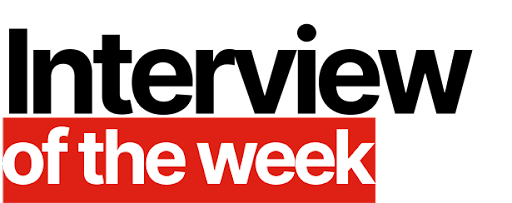

By Sabin Iqbal
You may wonder what has Pink Floyd’s album—the dark side of the moon—got to do with a software application.
It has a few things, in fact.
It tells you what you don’t see in your business. And, in any enterprise what you don’t see costs you millions.
“The interaction data between people and software is the dark side of the moon,” says Samson David, CEO of Soroco, a pioneering work graph company, which has created a new category of enterprise software that relies on a previously untapped data source— human-computer interactions emanating from daily work.
Soroco’s work graph platform, Scout, has already been used by some of the large enterprises across the globe to light up the dark side of their operations and to help the team perform their best.
We are in the grip of digital transformation, and most global enterprises invest significantly in driving several transformation programs but a McKinsey study says that 70 percent of these transformation programs do not give the desired result.
“The interaction data between people and software is the dark side of the moon. This data is unstructured, complex, undocumented, and ubiquitous,” says David. “The data that is generated by interaction between people and software in enterprises is 70 times more than what social media generates. Social media companies have created billions of dollars of value with these data because they make sense of this interaction data. In enterprises, this is a missing piece so far. If enterprises could make sense this unstructured chaos and create structured insights, it is a goldmine of insights into how their business is going,” adds David.
According to Soroco’s Task Mining Playbook, people spend over 60 percent of their workday outside systems of record (SORs) by interacting with different applications, composing emails, executing tasks and processes, and entering data into custom applications. “This is a huge blindspot for enterprises,” adds David, a Fortune 100 CXO, who has led hyper-scale organisations running complex, mission critical, real-time operations at DXC, HPE and Infosys serving 6,000+ enterprise clients globally and leading a global team of 150,000+ people.
He says that on an average, a person in operations spends five weeks a year toggling between applications. “A person spends 9.6 percent of his or her time toggling. Imagine, in a large enterprise, 10,000 people with an average cost $25-30/hour wasting their time just toggling between application—it is a $25m-30m toggling tax,” adds David.
This is a huge waste of human potential, apart from its large financial implication, which is not even ‘visible’ to the management. But why do people toggle? “Because applications don’t talk to each other,” says David. “This leaves the whole enterprise landscape fragmented.”
“The next wave of tech is the solution to crack the dark side of the moon but how do you do it? That’s where our work graph platform, Scout, comes in,” says David, who is a ‘builder-maker’ and has been passionate about creating products and platforms delivering client value found at the intersection of AI, ML, Advanced Analytics and business outcomes. He has founded and scaled Product & Platforms startups like Edgeverve and Bizp.
Scout, enables a culture of continuous improvement and identifies benefits from applying a portfolio of change levers, delivering targeted change programs at scale.
Soroco is the world’s first work graph company. With offices in Boston, London, and Bangalore with a roster of Fortune 500 customers across 30 countries, Soroco is on a mission to light up the dark side of the moon. “Our team has published over 150 papers and patents,” adds David.
Soroco is evangelising and commercialising its work graph, which is a structured view of how teams get work done across people, processes, technology and documents. The work graph, through its powerful dataset and insights, integrates and unifies disjoint categories like Process Mining, Task Mining, user training, BPM and RPA to provide ‘a single source of truth’. Teams can use the work graph to identify and resolve sources of friction at work, such as technology impediments, poor process design, opportunities for learning and collaboration, among others.
“Scout can give visibility to enterprises and teams on where they are and where they are going…whether to do a process redesign or automate. Scout is the Google map for enterprises,” says David.
Scout doesn’t look into individual performances but that of a team’s. David says Soroco gives priority to privacy. “Privacy is super important to us.” Scout maintains the privacy of every person while revealing patterns of how teams work by ‘anonymising insights across teams rather than highlighting them individually’.
David says though capturing data is important, having the clarity of what to do with the deluge of data is the key. ‘How connected you are with the ecosystem is also important,” he says.
The work graph requires zero IT integration, organisations should be able to transition to the technology without any disruption. By weeding out integration cycles, enterprises can realise business value faster from data stacks and enhance the success rate of transformation programs.
Founded in 2014 by three technocrats, Rohan Murty, Arjun Narayan and George Nychis, Soroco works with some of the biggest companies in the world. “Our ambition is to create a fundamental tech which will have a global impact. There is no technology that’s come out of India which aspires to be on every system of enterprises across the world. But, we want Soroco to be on every laptop and system in all the enterprises in the world.”
Soroco has 400-odd employees, but it doesn’t want to be a huge company. “We want Soroco to be an integral part of these huge companies. While we focus on creating the best tech for lighting up the dark side of the moon, our partners will help us grow 10 times or more,” adds David.
A deep tech company with operations across the US, Europe, UK, Singapore & India, Soroco’s software is used by the top 10 percent of Fortune 500 companies worldwide.
‘We are on a mission,’ says David. ‘The mission of building the next big technology that will have a sweeping global impact.’
Lighting up the dark side of the moon is the way of doing it.
